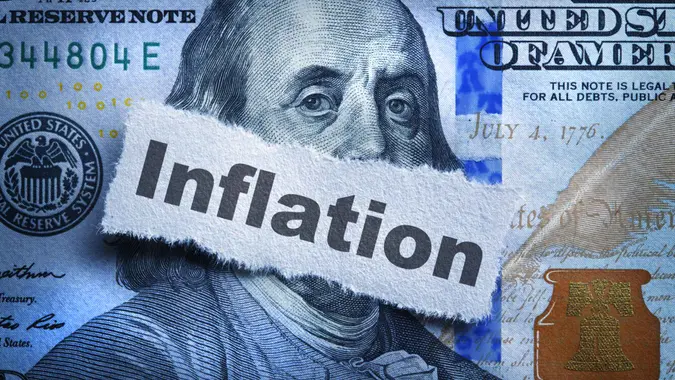Will It Be Cheaper To Eat at TGI Fridays Amid Bankruptcy Proceedings?

Commitment to Our Readers
GOBankingRates' editorial team is committed to bringing you unbiased reviews and information. We use data-driven methodologies to evaluate financial products and services - our reviews and ratings are not influenced by advertisers. You can read more about our editorial guidelines and our products and services review methodology.

20 Years
Helping You Live Richer

Reviewed
by Experts

Trusted by
Millions of Readers
It seems like TGI Fridays will keep the lights on for the time being. The casual dining chain had to file for Chapter 11 bankruptcy recently. The executive chairman of TGI Fridays, Rohit Manocha, stated in a press release that the company’s “go-forward restaurants [will] proceed with an optimized corporate infrastructure that enables them to reach their full potential,” which involves a heavy reorganization.
Along with the COVID-19 pandemic, Manocha pointed to problems with the capital structure of the business, citing the combination as the main cause behind TGI Fridays’ “financial challenges.”
If you are a long-time customer of TGI Fridays or even just the occasional diner, you might be wondering what will happen to prices on your favorite menu items at your local establishment during this time and whether you can save money by dining there.
So will it be cheaper to eat at TGI Friday amid bankruptcy proceedings?
Also see the No. 1 way you can save money on dining out.
Will TGI Fridays’ Menu Get Cheaper?
Firstly, this question relies on what the goals of the business are moving forward. “The answer to this lies in what the goal is during this time,” said Dave McMahon, Ph.D., professor of marketing at Pepperdine Graziadio Business School. “If TGI Fridays wants to grow its market share, it will use a penetration pricing approach.”
According to the Corporate Finance Institute, a penetration pricing approach is when low prices are set on items or products to allow them to gain market share quickly. However, before implementing this approach — or any other approach — the business must answer some key questions, according to Izzy Kharasch, president of Hospitality Works.
“Before the company can make any serious moves on the menu, there are three key questions that need to be answered. Once these questions are answered, then the company can move to menu strategies,” Kharasch said. “What will improve guest satisfaction? “What will drive traffic in terms of bringing in new customers? What will drive the most important guest — the return customer?”
Before you see any price changes on the menu, you might see changes about what’s offered on the menu. “The first thing that will happen is that the menu will be analyzed to determine which items sell best and which ones don’t,” Kharasch explained. “Those that don’t sell well (the ‘dogs’) will be taken off the menu. The reason for this is to lower inventory and most likely lessen waste, both of which will save money.”
According to Kharasch, once the “dogs” are removed from the menu, there will be an in-depth analysis of the cost of each item. Then the company will determine a new and perhaps lower food cost.
“This will require that the company review the portion size and specification for each key item,” Kharasch said. “An example might be the size of the burgers. Some companies are moving towards a larger burger, and this may replace a few of the current offerings.”
Kharasch highlighted that a major goal “is to keep the bestselling items and avoid increasing prices while increasing profitability. Other things that will happen to the menu is offering more combinations/specials to drive the guest to a higher check through the perception of getting more for their dollar.”
In McMahon’s opinion, the way that TGI Fridays restructures all comes down to thinner margins and lower prices.
“The issue with this is whether or not they can maintain this cost structure when they come out of bankruptcy,” he said. “By going with a penetration pricing approach and lower prices, they will reset the internal reference price range of the consumer.”
 Written by
Written by  Edited by
Edited by 

























